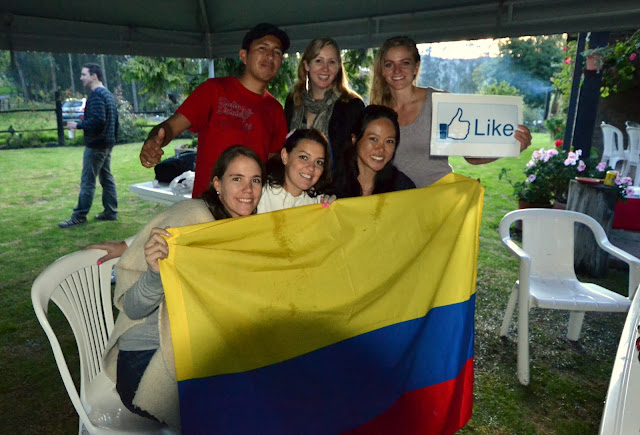Today’s post is about food.
What’s your relationship with food? Food is a commonality between all humans as a basic need and daily ritual. Our relationship with and perception of food fascinates me: Do we use it as a reward or punishment? Are we addicted to it? Do we eat too much or too little of it? Do we use it to nourish or is it causing our bodies damage?
I’ve always considered myself to practice relatively healthy eating habits but sometimes it takes a somewhat dramatic change to alter mindsets about what goes into your body. For instance- a heart attack, weight gain, a diagnosis of cancer or diabetes. For me, it was a detox.
A couple of weekends ago, Juan and I decided to do a 3-day “detox” consisting of a diet of only fruits and vegetables; pretty straight forward, just like it sounds- plus, no caffeine (fudged a little on this one) and no alcohol (stayed faithful to this one).
 |
| Organic strawberries from a farm in Guasca |
The fruit/vegetable diet didn’t sound too extreme so I gave it a shot. It was a valuable experience. It caused me to rethink what I am (and am not) putting in my body and 3 weeks later, I’m trying to maintain a clean diet, consisting of all natural foods, free of preservatives and artificial flavors/colors/additions.
During the 3-day detox, I kept a food log and recorded how I was feeling and reflections I was having. Here’s what I wrote at the end of Day 1:
“After not even 12 hours, I am re-appreciating what I am putting in my body to nourish it. I am already estimating some of the small changes I’d like to make in the long run re: my diet. For instance,
- nixing Splenda in my coffee,
- cutting back on alcohol,
- cooking with more frequency and using plant-based recipes,
- drinking at minimum a Nalgene bottle of water/day,
- incorporating raw veggies into my snacks and meals (having these things on hand)
- and really thinking twice about using preserved/packaged food.”
 |
| Now THAT'S a limón! |
In addition to the above adaptations, I’ve also made the following changes so far:
- replaced brown, cane sugar and honey instead of splenda or white sugar
- I keep the fridge stocked with lettuce, spinach, eggs, avocados, yogurt, water bottles and cherry tomatoes
- I subscribed to an excellent clean eating blog and have tried 3 of the recipes so far
- I start the day with a glass of water (and then coffee) and stay hydrated throughout the day
- I’m tasting my meals and actually paying attention to when I’m satisfied (not full).
 | |
| Nice clean breakfast |
The clean eating diet is not always easy and I don’t think I can follow it with 100% fidelity. Eating out, for example, is a toughie. Yet things like salad bars and ordering “dressing on the side” are suddenly more appealing to me and not because I’m trying to cut calories or lose weight – these small modifications simply help minimize the toxins that go into my body. In fact, it's more realistic to say "clean eating mindset" as opposed to “clean eating diet. My perception is that a clean diet isn’t really a diet at all – it’s a mindset change that is starting to become a lifestyle change.
Christmas Eve was a fun way to experiment with new, delicious, clean recipes to share with my family last night. Last night we enjoyed:
- Vietnamese Spring rolls
- Corn, tofu, tomato balsamic salad
- Homemade spiced cider
- Rum balls made from clean brownies, organic dark chocolate and…the all natural Captain Morgan(...)
Tonight, we’ll enjoy salmon with a mango balsamic reduction sauce :)
I’d like to say that I’m noticing all these miraculous transformations since I “came clean”, and while I have noticed an increase in natural energy and appreciated the feeling of being satisfied - not full - after meals, it’s more realistic to say that I just feel good about how I’m treating my body, and I intend to maintain this lifestyle.
I wish you an abundance of good, clean fun this Christmas!
 | |
| I DO...want to eat more green things :) |





























